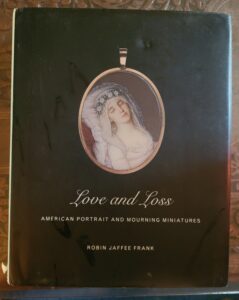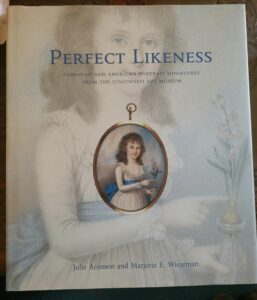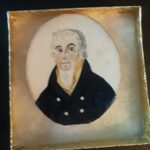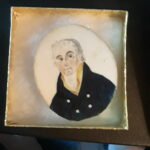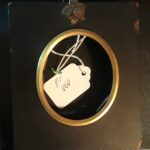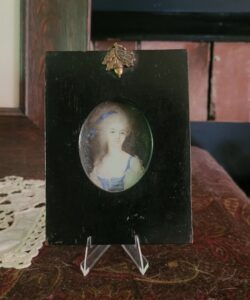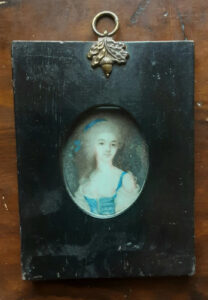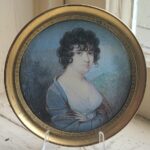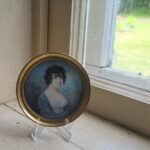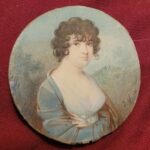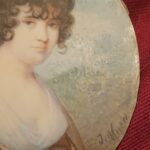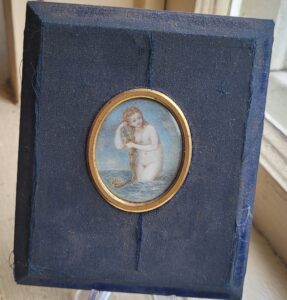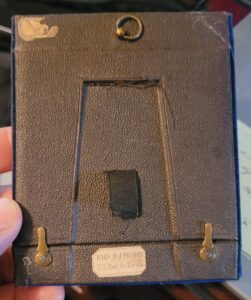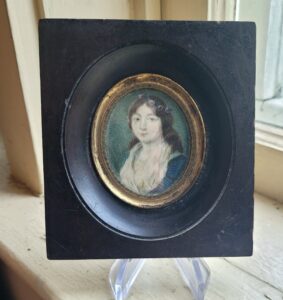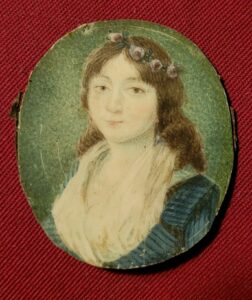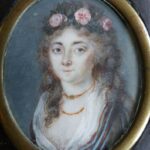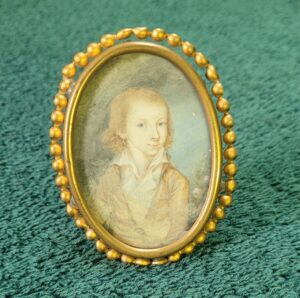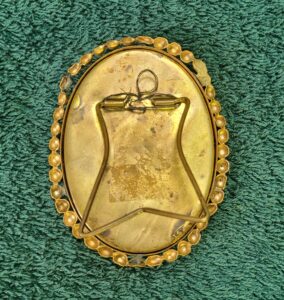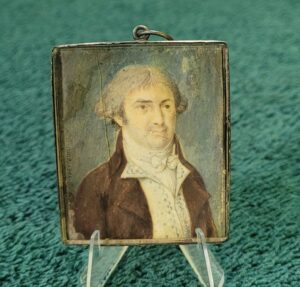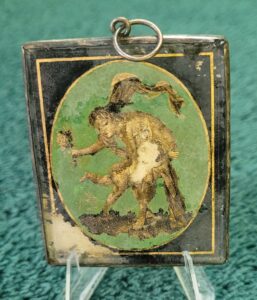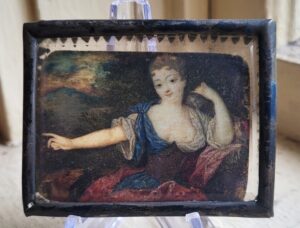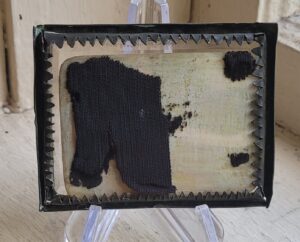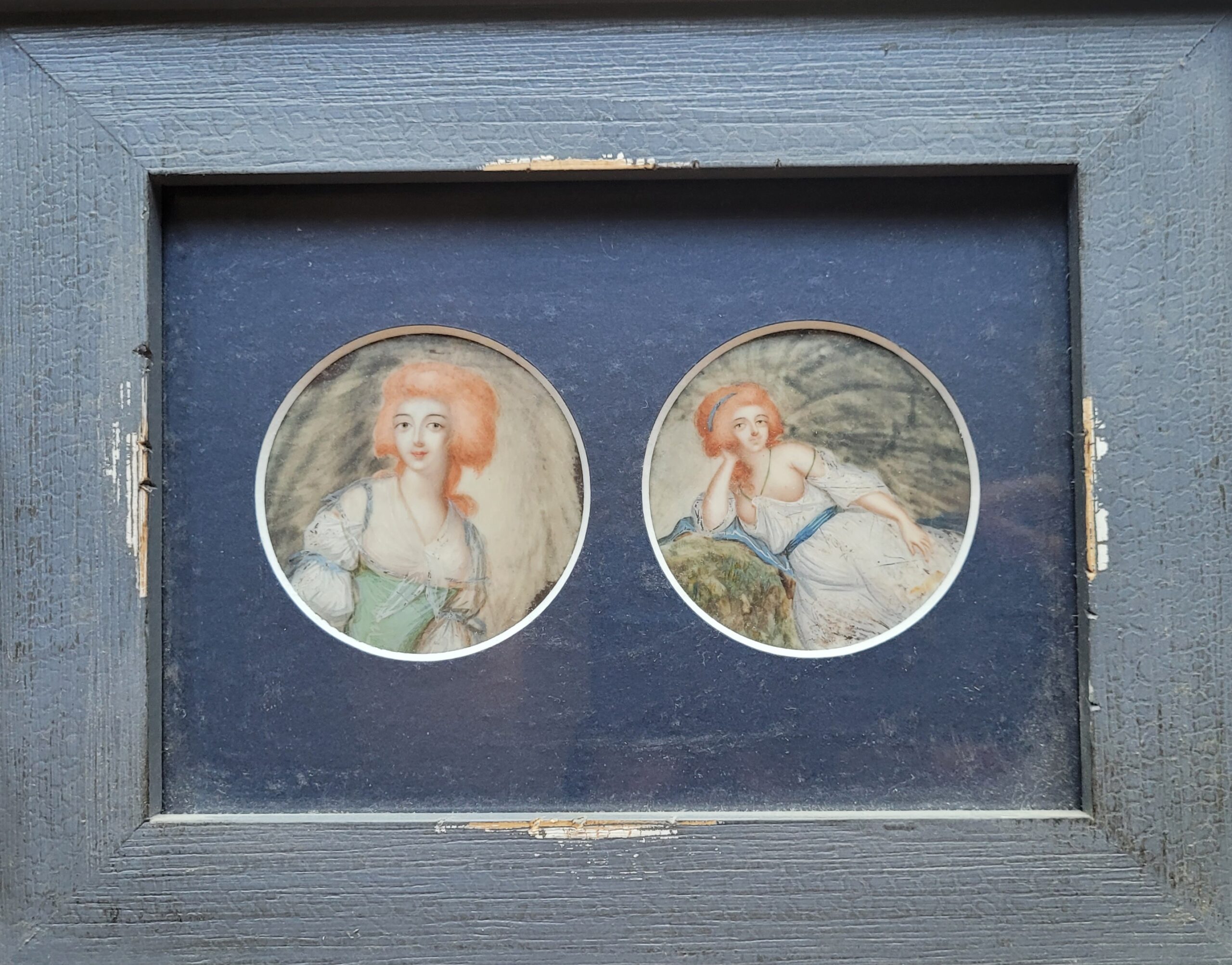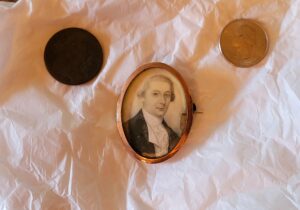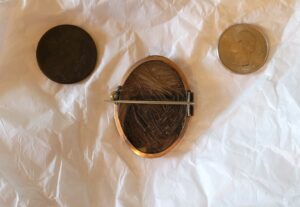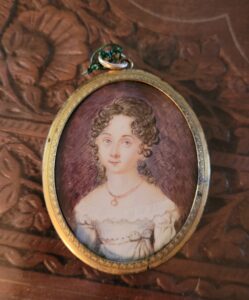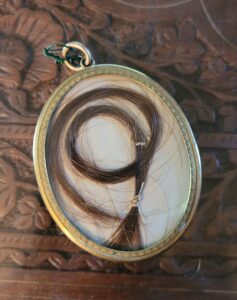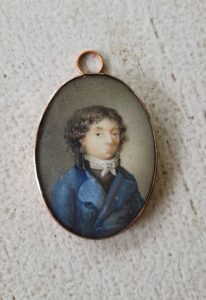In early days of the Grand Project, I came across some portrait miniatures of some descendants of Moses Tryon through his eldest daughter Elizabeth. It occurred to me that as I searched for portraits of some of my officers, I might also look into the possibility of portrait miniatures. Alas, in almost all cases, while the signature of the painter might be seen on surviving pieces, almost never is the subject featured in the piece actually named thereon, and the person is known by family oral tradition. Still, I found the pieces of interest, and I began collecting them. Faces of those long gone but relevant to the late 18th and turn of the 19th centuries. I periodically will pick up one here and there and give them a good home. The following is, therefore, something of a museum, with each piece accompanied by what little information I had been able to glean. These often come from private estate sales, and while I can cite the state or region the piece came from, the seller has no further information to impart; how very sad. Aside from the information I obtain from the seller, I also utilize these two volumes as my immediate sources of information…
A few of the following are not in my own private collection, but I will state this with the specific piece. In those cases, I find some interesting social tidbit I want to share, and will try to link to the home citation.
A period sea captain.
I picked this piece up at one point with the mildest of fancies that it could be one of “my people”. The seller was sure that it was a “sea captain from the 18th century”, but to my eye it appears to be a sea captain or ship’s master of around 1800, give or take. I might say that it could be a more into the 18-aughts and 1810s. No indication to me of that being a Naval coat. It is painted on an ivory disc but lacks glass and a backing, so I keep this in a small box for protection until such time that I pick up a replacement crystal for the front.
An English Maid.
I picked this lovely lady up fairly recently from the owner in Spain. It is British, thought to be English specifically, and dates to about 1785. It is a watercolour and might be painted on paper… I am reluctant to peel up the back as it is firmly attached, but may do so in the near future. The frame is “ebonized” with an oak/acorn frame and thought to be original to the portrait.
A Georgian Woman.
This is a lovely, dark-haired lass from perhaps the 1810s, Great Britain, although I’ve seen some similar from the “French school”. Pretty blue shawl and her chemise is somewhat sheer, with a suggestion of her breasts to be seen. Painted on paper and within a gilt frame, signed, but I am unsure as to what the name reads. Perhaps you might help me?
Venus Brushing Her Hair.
This lovely little piece is from the “French School” and is gouache painted on paper. It is a study, for there are numerous versions out there, and may well have been one of a bunch made specifically for sale as a “collector’s item”. I have been informed that it dates to the mid-to-late 18th century, but I have nothing further at this time regarding it. There is no signature. The frame has a tag that reads << Jules Hautecoeur, 172 Rue de Rivoli >>, but I have been assured that this was not the artist; Hautecoeur was known as a photographer and print maker, living from 1849 – 1935. He ran a shop at that address in Paris, and “sold miniatures and paintings of the previous age”, very likely having been the one to frame this miniature made well before his time.
Girl with a ring of flowers in her hair.
I purchased this from a seller in Spain back during Covid. She had a mate, possibly a sister, who looked as though they were related and with a more elaborate ring of flowers in her hair, but that one sold to someone else. This young woman is supposed to have been painted in the 1790s, and may either be Spanish or French. I cannot discern a signature. Gouache painted on paper.
Southern Boy
I obtained this young man from an auction of an estate sale. Ostensibly, this came from a family in North Carolina, going by the word of the auction seller. It dates to the late 18th century, is watercolour on paper, and is contained in this ornate, gilded frame with a hinged “foot” on the back for ease of display. The quality of the artwork suggests that it might have been a European-trained artist rather than the typical “American artist”.
Society Gentleman
This is a curiosity that I picked up a couple of years ago. This gent is probably from the 18-aughts, is from England, and the seller thought that the image on the back (somewhat deteriorated) was that of a “gentlemen’s society”; it appears to be a nude woman spanking the exposed buttocks of a cupid with a rose and greens. I have no evidence to support this claim but thought it worthy to share. It is firmly held in a silver frame and I hesitate prying it open.
Shaving Kit Girl
I love this little portrait of a woman reclining, one of her breasts exposed, nipple evident. It’s painted on bone and the back looks as though it had been affixed to something at one point. Since I acquired this lovely lady, several people have pointed out that it was most likely part of a gentleman’s shaving kit, removed for resale. Dates to the 1770s, most probably British.
Courtesan in Repose
This is a lovely lady that came as TWO paper discs. Her breasts lack detail, and the lack of detail is not indicative of damage. I had her framed as both discs together, for when I obtained her, they did not come with a frame. Believed to date to the 1770s.
A Gentleman’s Mourning Brooch.
This is an example of a mourning brooch. Almost all the online research on this topic suggests, if not outright states, that the practice of mourning brooches began in the Victorian Era. I often find that certain social practices that I research will often be tagged as having started in the mid-19th century, or during the “Gothic Revival“, or during “the days of Jane Austen” at the earliest. In my experience, this is almost always misrepresentative. There are lovely examples of mourning practices from the 18th century using hair that, while perhaps not yet widely common, were already in use enough that collections in, say, Sterling Memorial Library and the Beinecke hold. In some cases, the original was likely reset in later years, given the frame, and yet there are again examples of portrait miniature frames made of gold or silver that are hallmarked to the 18th century and yet appear as though it is a style of craftsmanship associated 100 yrs later. Here is an example from my own collection of a man from New York, dated to the 1790s. For size comparison, I photographed it next to a modern quarter dollar and an original 1787 copper penny made in Connecticut. The frame is copper.
Young Lady Mourning Brooch
That said, here’s an example of a young woman from about 1820 +/-. The hair in the back is less ornately woven and instead is a simple braid, and no less poignant for the surviving loved one who held it. American, but I do not know from where specifically. The frame appears to be gold plated.
Un jeune homme de France
This is an interesting piece from 1790s France. The artistry calls to mind some of the more modern work of graphic novels. The frame is copper and believed to be original, but the back has been replaced with some modern waxy sheet and the toggle atop is also a recent replacement.

